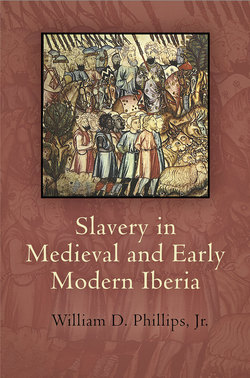Slavery in Medieval and Early Modern Iberia

Реклама. ООО «ЛитРес», ИНН: 7719571260.
Оглавление
William D. Phillips Jr.. Slavery in Medieval and Early Modern Iberia
Отрывок из книги
Slavery in Medieval
and Early Modern Iberia
.....
Slavery played a crucial role in colonial economic development, and eventually portions of the Americas became true slave societies. Slavery in Spanish America was complex, and during the first two centuries of the colonial period, two systems of slavery coexisted. One was an outgrowth of the traditional pattern of slavery in the Christian Mediterranean during the Middle Ages. In it, owners employed slaves as domestics, artisans, and assistants of all kinds. In the first decades of the Spanish settlement of the Americas, this was the predominant system, with slaves and freedmen, often of African origin, acting in an intermediate role between the Spaniards and the Amerindians. The other system was large-scale slavery for the sugar plantations and the mines in Spanish America and Portuguese Brazil, a variety of slavery reminiscent of the Rome gang slavery in the late Republic and early Empire and one virtually non-existent in Europe and North Africa during the Middle Ages. With the passage of time, the highly concentrated gang slavery became the more important of the two in many parts of the Spanish and Portuguese colonial areas.33
Back in Iberia, there was a slight rise in the numbers of slaves in Iberia and in the social importance of slavery from the middle of the fifteenth century to the late sixteenth. Despite the growing number of sub-Saharan Africans, slaves of other origins still were important in Spain, including captives from the wars of conquest in the Canary Islands, who began to arrive in greater numbers in the period from 1480 to 1530. Still other slaves were Muslims, captured in the peninsula or at sea in the Mediterranean. There also were Moriscos from the peninsula itself. The numbers of Muslims and Moriscos were significant in the period 1570 to 1630 and reached a peak in the decade of the 1620s, following the expulsion of the Moriscos from Spain.34 Spain and Portugal were prospering, and many Iberians were growing rich from the flows of African and Asian products and eventually of American silver. With increasing prosperity, rural and urban workers began to move from place to place in search of better jobs and improved working conditions. Some employers turned then to slaves, who were by definition fixed to the place the owner assigned them. Keeping slaves in one place was one thing; saving on taxes was another. In the sixteenth century an old Castilian tax, the moneda foránea, came to be converted to a luxury impost paid by those who had free servants. It did not apply to slave owners, many of whom used their slaves in the same way that others used free servants.35
.....